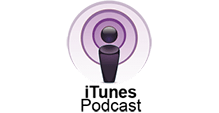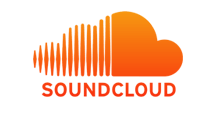After working with hundreds of YouTube creators over the past 10 years to successfully grow their YouTube channels, I took the basics of how to get discovered on YouTube and put it into this 45 minute presentation at a YouTube event called CVX Live. In it I discuss how to get more YouTube views, how to get more subscribers, and how to start getting exposure for your channel so people find your videos and engage with your content. It’s all about how to start growing a YouTube channel when you’re very small so people can find you in search and related videos.
Back Story
For me, YouTube started in 2006, so about 11 years ago now. I’d heard of this place called YouTube, uploaded my very first video. I called it Test Video. So you know I put a lot of creative juice into this. It was like 30 seconds long, just me sitting in my apartment with one of those eight millimeter cameras. Do you guys remember what those are? They used magnetic tape that would eat like half the time, and you’d lose most of your photos and have to start over– really annoying. I had Windows Movie Maker. It was awesome. It was free. It was on my computer. And that’s how I got started.
And at that time, there was no such thing as vlogging per se. There was no word that had been termed yet. But I was in Dallas, living halfway across the country from my family, who was back in the Philadelphia area. And I thought this would be a good way to introduce my girlfriend at the time to my family back home. So we started going out, just making little videos of us going out on dates, going out to eat, going to the park, going out to movies, things like that.
And back then, it was just as weird as it is today to walk around talking to a camera like it’s a human being. But we did it. And we just kind of kept going. Then we got engaged. And that went up on YouTube, to everything from our wedding to our honeymoon, our first house, first job, everything. And we just kind of kept going.
And today my wife is over here in the corner with the camera. And we’ve been married 11 years now. We have six kids. Our oldest will be eight next week, and we’re pregnant with baby number seven on the way. So we somehow figured out how to cram seven kids into eight years. Twins helped a little bit– the identical twin girls.
But we’ve been full time on YouTube now for about 4 and 1/2 years.
We had to figure out who was watching and why
Before that, I quickly got pushed into the industry side of YouTube as we were doing some of these family videos, and other people started to comment on them. I’m like, who are you? Like, where’d you come from? Why are you watching our videos? And then before long there was more people commenting, and more people talking. And I was like, who are all these people? So I started trying to figure it out.
And at that time, the industry– well, it wasn’t really an industry yet. It was just a few people having fun. There was no Partner Program yet on YouTube, Google didn’t own it yet, anything like that. And some of these other people were trying to figure it out, too, and people were going to them. And they’re like, we don’t know, but this guy Tim Schmoyer is trying to figure it out. You should go talk to him. And so from that point on, I started studying audience development on YouTube.
And before long, I was working for a company doing it for their clients full time. And then when that gig ended, they said, Tim we love ya, but this position is going to be gone in about six months. So I took that six months, I started a new channel called Video Creators, and in six months we had 3,000 subscribers, and it was generating about $10,000 a month, which was awesome. And I thought, man, I should have quit my job a long time ago.
Where we’re at now
Since then, it now supports a small team of us. And we just love working with people like you guys, helping you guys grow your YouTube audiences, not just for the sake of money, or views, or popularity, or anything, but ultimately, because it’s an amazing platform to reach people with a message that can really change their life.
How to get an audience
You guys probably know, you’re up against a lot of competition. There are over 400 hours of content uploaded to YouTube every minute. So that’s a lot. Just do the math in your head. It adds up really quick. And how do you make your video stand out amongst all of that, right?
In order to get discovered on YouTube, what it really comes down to is how well do your videos help YouTube accomplish their goals.
YouTube’s Goals
- More hours watched.
- Making money.
- Put more ads in front of more people.
So the better your videos help Google accomplish a few things, the more they’re going to like your videos, and the more they’ll surface them.
YouTube’s goal is to get people to come to YouTube, to spend as much time there as possible, engaging with as many videos as possible, watching as much content as possible, getting as many ad impressions as possible. And the more your video contributes to helping Google accomplish that goal, the more they want to favor your content.
How to get YouTube to promote your channel
YouTube promotes videos that help them with these things. And they measure them in what’s called viewer signals. And we’re going to talk about three big ones:
- Watch Time – that is, do people watch your videos
- Session Watch Time – what do people do as a result of watching your videos. Do they watch more videos? Do they leave YouTube? Do they get bored and stop?
- Do your videos bring people back to YouTube to watch more.
So how do you do that, right? How do you help Google with that?
Engaging content
What it really comes down to at the end of the day is, you need to have engaging content. It just really needs to be rock solid, engaging content. That’s the most important thing. Anything else we talk about here today doesn’t matter if your content is lame. Engaging content hooks someone’s attention and then holds their attention, makes them feel compelled to watch the whole video, and then ideally, has them watch other videos, too.
- First, you’ve got to hook their attention.
- Then get them to watch the whole thing.
- And then once they watch the whole thing, get them to watch more.
This is actually very hard to do. People on YouTube have very short attention spans. There’s a ton of other content they could be spending their time on, and there’s nothing prohibiting them from clicking away from your video. So holding people’s attention is a lot harder than it looks.
Maybe you’re like me. When I watch a good movie, and the actors are just killing it, they make it look so easy, don’t they? I’m like, “oh, I could be an actor”. Yeah, that looks easy. Or, you’re like, oh, that musician up on stage, they’re playing the piano, so easy. And I could learn to play the piano and be there in maybe like a year or two. No big deal.
Same thing with a lot of the YouTube creators that you guys watch. The best ones make it look so easy, and they give us this idea of, “oh, I could do that”.
YouTube has already learned what that viewer wants to watch. And so they’re going to keep putting content in front of that viewer that has already proven itself to work well, to perform well. YouTube can map out almost the entire viewing session that that person is going to have based on what videos they show.
It’s going to be difficult
They already have a ton of content that’s performing well, that is already guaranteed to give them a result that they want. And your content is probably brand new to them, and they don’t know too much about it. So it’s harder to break through. I’m not trying to be discouraging. I’m just giving you guys a realistic idea of what’s going on here.
The questions we all ask before we consume content are: Is this for me? Is it valuable to me? And do I care?
So your videos, and your title, your channels, everything, need to affirm for that viewer very quickly that, yes, this content is for me. I’m the target audience. Everyone consumes content selfishly. Now, don’t take it personally. I don’t. Those are important filters for us to have because there’s so much noise out there in the world. That’s just how we filter out a lot of that noise, which is great.
Knowing both who your target audience is and the value that you propose to deliver to that person is very important.
Next thing you have to consider with the content is the titles, the thumbnails, and the hook.
Some of the top YouTube creators actually spend just as much time crafting their titles and their thumbnails as they do the actual video content itself. Because they understand this principle. They can put a ton of time into making this beautiful video that looks, sounds great, is very valuable content, but if no one feels like, this is something I want to watch right up front, then no one’s going to get to it.
Titles
The main point of titles– this is something a lot of new creators get wrong, is they optimize primarily for robots, which would be like the YouTube algorithm. So they use all of these keyword tools and try to shove all their keywords into a title that looks like it’s– now Google knows absolutely everything about my video. And they also feel like, yeah, this has got every keyword in it I need.
The problem with that is Google’s goal isn’t to promote videos that have perfect keywords in them. What they’re trying to do is promote videos that people click and watch. So it’s more important to optimize your titles, and your thumbnails, and optimize everything more for people rather than robots.
So keep your keywords in mind when you write your titles, your tags, your descriptions, things like that. But focus primarily on the human element of what’s the story that’s being teased here, what’s the value I’m trying to deliver, and focus more on that.
So I think we’re getting a little bit more intermediate to advanced here. But Google can read at like a sixth grade reading level. So they’re really, really smart at figuring out what your video is about. Because the problem with the metadata is a lot of people lie. They just do. They feel like, hey, if I put PewDiePie in my tags, now I’m going to get really popular all of a sudden. Even though the video has nothing to do with PewDiePie.
And so Google kind of takes all the metadata with a grain of salt.
They’ll position it. But if you have a video about dogs, and the thumbnail and the title and everything is about cats, Google will figure out pretty quickly that, hey, we positioned this for dogs, because that’s what it said, but no one with dogs is clicking on it. Only the cat people are clicking on it. They’ll figure out pretty quickly, this a video about cats, all right.
I want to tell you about a resource that I created just for you guys to help you turn your YouTube channel into the most subscribable channel possible. And it’s an ebook I created called “30 Days to a Better YouTube Channel.” And in that ebook, every day for 30 days, you are going to work on your YouTube channel on a specific task to achieve a specific goal.
So every day in that book includes, one, includes a teaching, something you need to know. And then number two, it includes some tasks, something you need to do on your own right then. And then, three, it also includes links to further resources if you really want to dive in, and really dig into that area that the ebook is teaching on that specific day.
You can get it at videocreators.com. It’s called “30 Days to a Better YouTube Channel”.






![We are Taking a Break [Ep. #404]](https://s30249.pcdn.co/wp-content/uploads/2022/06/podcast2022_2a-scaled-500x383.jpg)